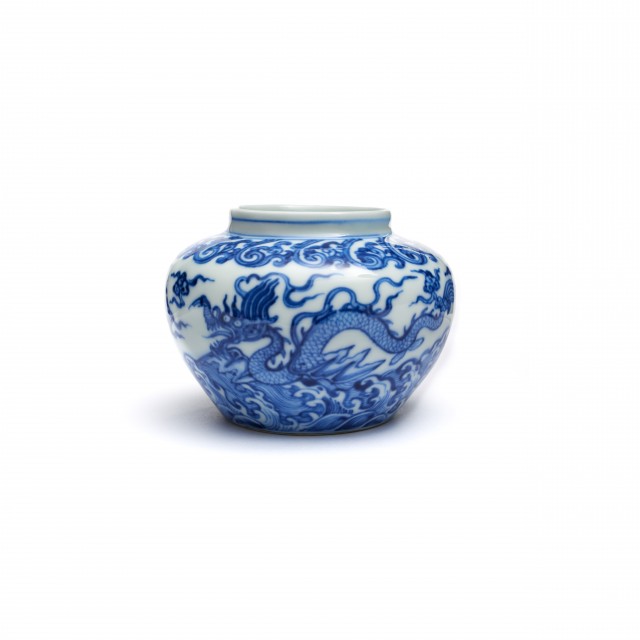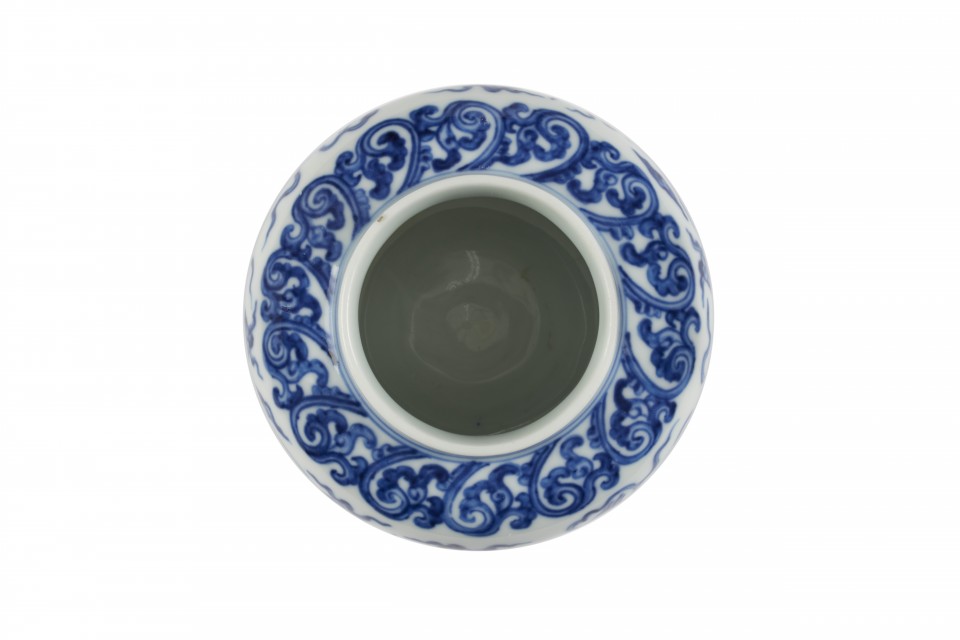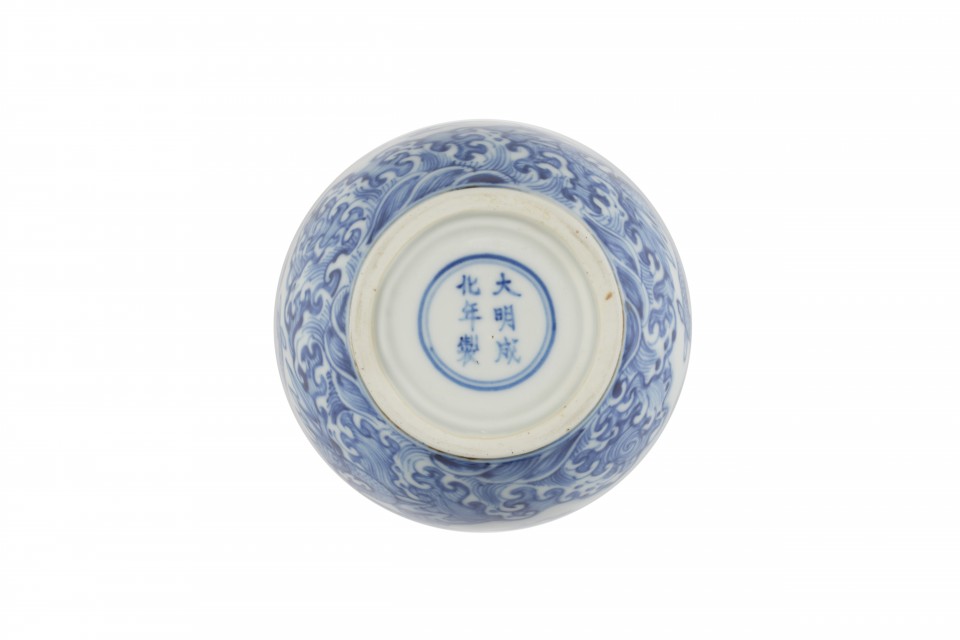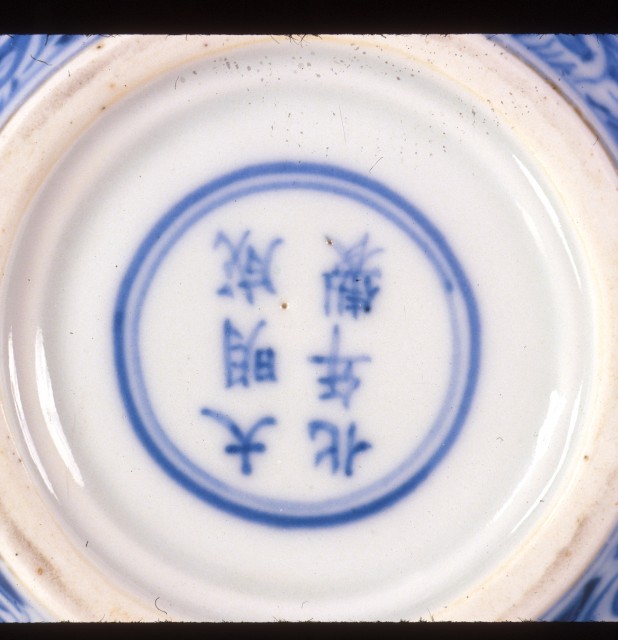Jar

Photography by Synthescape, Digital image © Asia Society

Photography by Synthescape, Digital image © Asia Society

Photography by Synthescape, Digital image © Asia Society

Photography by Susumu Wakisaka, Idemitsu Museum of Arts, Tokyo, Digital image © Asia Society
Jar
Chenghua era, 1465-1487
China, Jiangxi Province
Porcelain painted with underglaze cobalt blue (Jingdezhen ware)
H. 3 1/4 x Diam. 4 3/4 in. (8.3 x 12.1 cm)
Asia Society, New York: Mr. and Mrs. John D. Rockefeller 3rd Collection, 1979.173
Provenance
John D. Rockefeller 3rd, New York, NY; acquired through John Sparks, Ltd., from Sotheby’s London, July 2, 1968, lot 128, in 1968.
The Asia Society, New York, NY, bequest of John D. Rockefeller 3rd, New York, NY, 1979.
Licensing inquiries
The rare motif of a flying-fish dragon (feiyu) on this small jar marked with a six-character Chenghua mark has been interpreted as a reference to China's position as the world's most important seafaring empire in the 15th century. Identified by his wings, fins, and fishtail, this creature has been associated with the legend of the wondrous fish-dragon who saved a drowning Tang-period scholar and bore him to the heavens for rebirth as the chief star of the Big Dipper. The image has also been linked to some type of religious practice. The shape of the jar also distinguishes it from the majority of others made during the period. It is one of a small group of jars characterized by the distinctive treatment of their bases and foot rims: on all of these pieces, the underside has been cut into small steps leading from the edge of the foot ring to the center of the base. The reasons for this unique form remain unclear.




